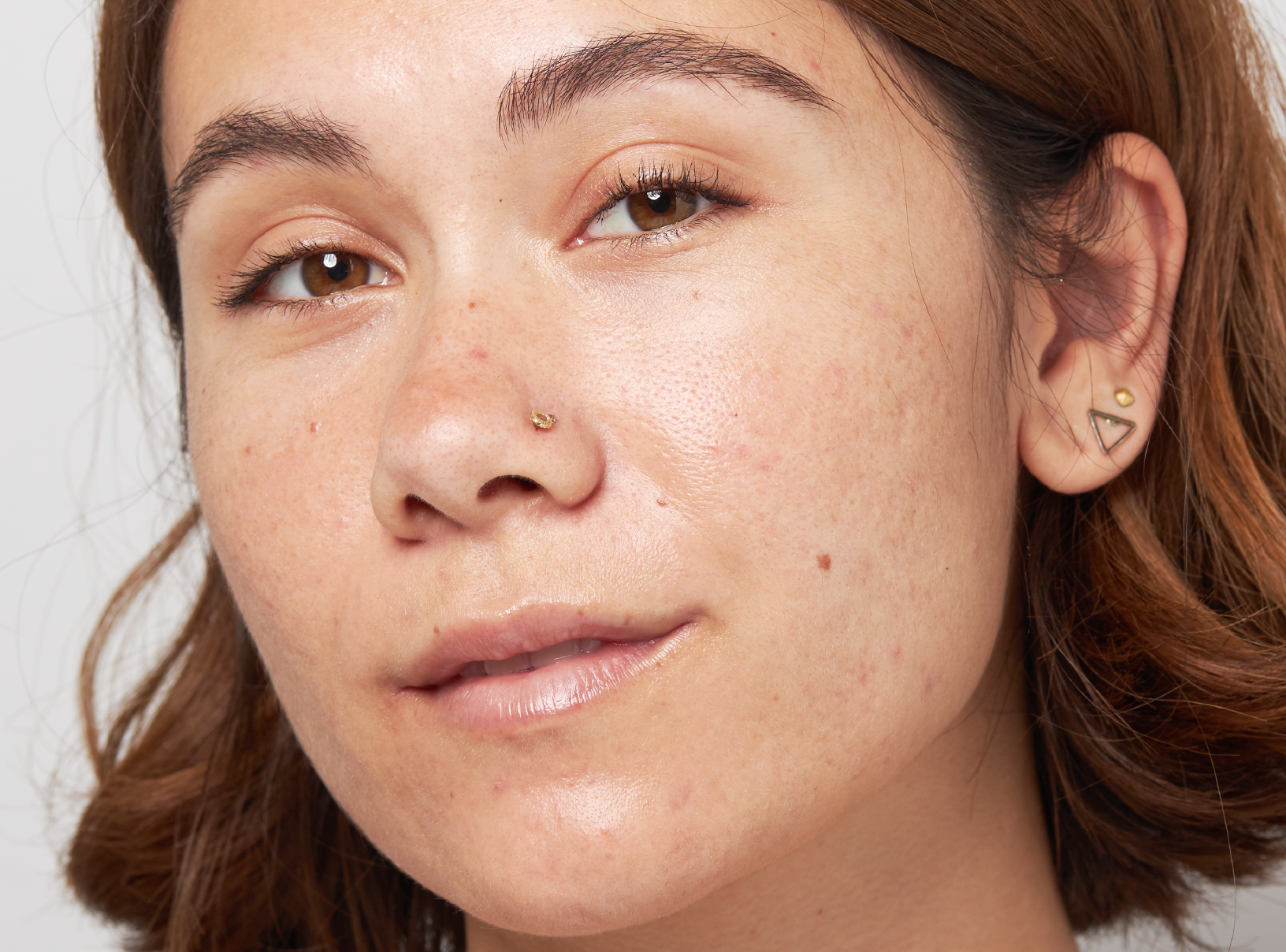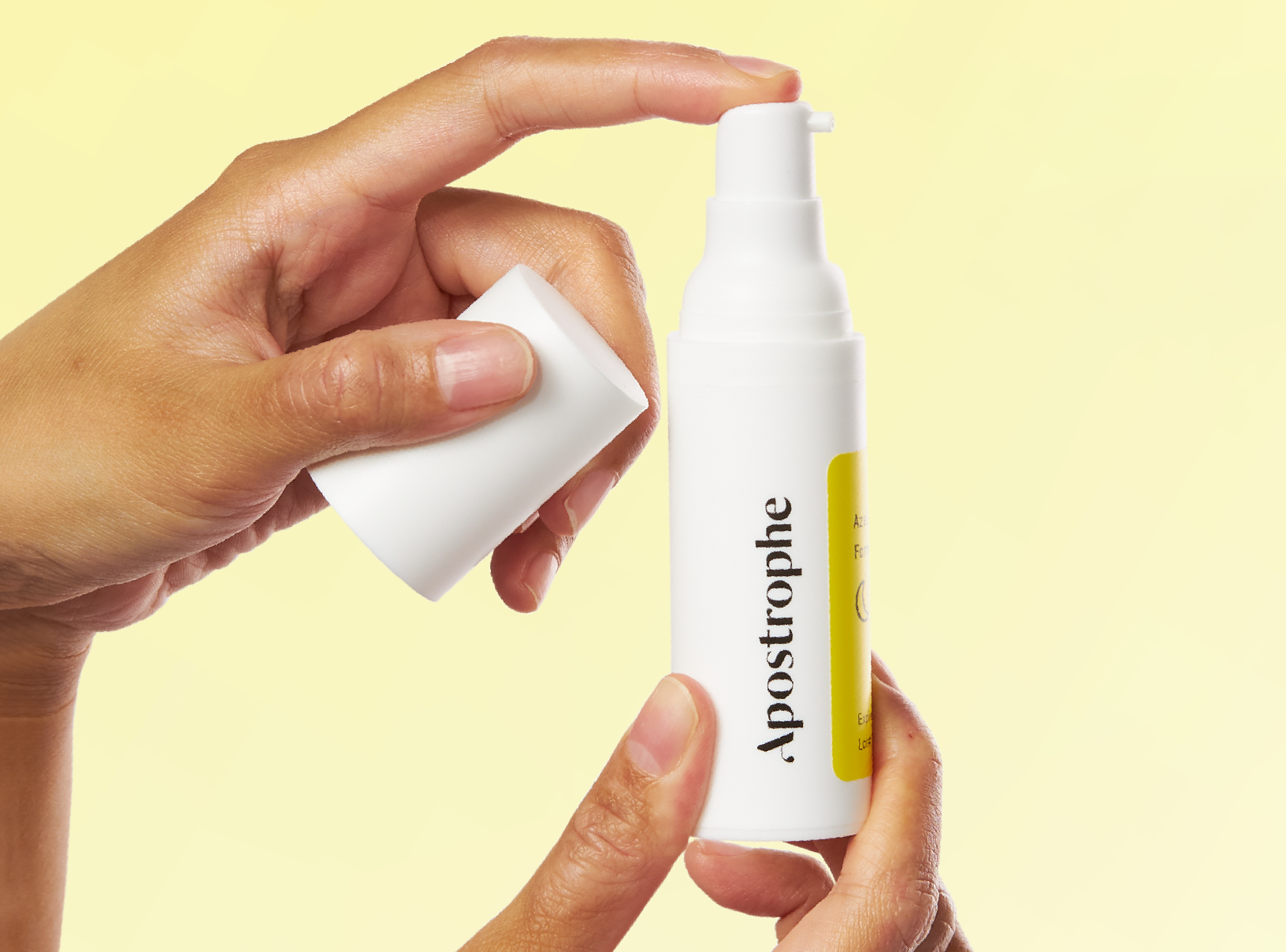Education
Acne dark spots: how to get rid of them


SHARE
Education
Acne dark spots: how to get rid of them
Medically reviewed by Kristin Hall, FNP
Written by Apostrophe Team
Last updated 10/1/2024
Just when you think it can’t get any worse — you have acne, isn’t that bad enough? — you find dark spots appearing as your acne lesions heal.
Having acne can disrupt your self-esteem, social life, and general happiness. And dealing with scars and dark spots certainly won’t do anything to improve the situation.
Fortunately, you don’t have to live with acne or the dark marks that happen after. There are medications that can speed the healing of these spots, and measures to take to prevent them.
What Causes Dark Acne Spots?
Pimples can appear as dark spots as they arise, but when we talk about “acne dark spots,” we’re typically not talking about the pimples themselves, but rather the dark spots that stick around once the pimple is gone.
Skin discoloration or dark spots that stick around after blemishes are generally acne scars or post-inflammatory hyperpigmentation, or PIH.
There are several types of acne scars — generally categorized under atrophic or hypertrophic.
Atrophic scars are those that result in an indentation in the skin, like a divot. Hypertrophic scars and keloidal scars are raised or stand out from the skin.
Hypertrophic scars are typically pink in color, while keloid scars form as reddish-purple papules. These are more common on dark skinned individuals, but may occur in all skin types.
Post-inflammatory hyperpigmentation is a release of excess melanin (skin pigment) caused by inflammation after an injury.
Acne is one such injury. So are burns, eczema, allergic reaction, and even insect bites. Like keloidal acne scars, PIH is more common in people with darker skin tones but can occur in all skin types.
The Effects of Post-inflammatory Hyperpigmentation (PIH)
PIH and other skin discolorations are among the most common reasons people of color visit dermatology practitioners.
Depending on the severity, dark spots after acne can not only be annoying but can seriously impact how you see yourself.
Research indicates patients with PIH can worsen the social and personal psychological stress that often accompanies acne.
This is exacerbated by how long these discolorations can take to resolve.
Generally, PIH takes months, possibly years to fade. But there are solutions that could speed up healing time.

CUSTOMIZED HYPERPIGMENTATION TREATMENT
Get customized treatment for your dark spots, melasma, and hyperpigmentation.
Treatment for Acne Dark Spots
Treatment for PIH should begin by treating the acne that led to the dark spots. Getting your acne under control can prevent additional dark spots down the road.
Talking with a dermatology practitioner about your acne breakouts can help you get started on a treatment regimen that may include over the counter topical products, topical prescription retinoids, and/or prescription antibiotics.
A dermatologist or healthcare professional can also help determine what PIH treatments are best for your skin, once your acne is under control. Some treatment possibilities to potentially get rid of dark spots include:
Glycolic acid: A type of alpha-hydroxy acid often used in the treatment of both acne and hyperpigmentation.
Azelaic acid: Like glycolic acid, azelaic acid may be effective in treating acne and PIH.
Sunscreen: This can not only help prevent PIH, but is also an integral part in PIH treatment to help prevent it from worsening once it occurs. Use a broad-spectrum sunscreen of SPF 30 or higher.
Salicylic acid: A common acne treatment that may be useful in treating PIH, particularly when used in conjunction with topical retinoids.
Topical retinoids: One of the most commonly prescribed acne medications, topical retinoids may also be effective at treating PIH.
Hydroquinone. Considered a mainstay in the treatment of PIH, hydroquinone can either be used by itself or in combination with other medications to help lighten dark spots.
In Conclusion
Acne sucks. We all know it. And when you start seeing dark spots forming just when you think you’re over your acne hump, the frustration can seem overwhelming.
We get it.
Luckily, acne dark spots are relatively common and treatable through the use of medications like topical retinoids and hydroquinone, as well as sunscreen and glycolic, azelaic, and salicylic acids.
If you’re noticing any dark spots after your acne has healed up, contact your healthcare provider or dermatology practitioner to see what your options are and learn more about what’s going on.
References:
https://skinofcolorsociety.org/dermatology-education/post-inflammatory-hyperpigmentation-pih
https://www.ncbi.nlm.nih.gov/pmc/articles/PMC5479473/?tool=pmcentrez
Like what you just read? Sign up for our email list to get the scoop on skincare science delivered straight to your inbox.

Deep Dives
A dermatologist shares his thoughts on the recent studies about benzoyl peroxide and benzene.
Read More
Education
What is milia?
What is milia? Today, we’re jumping into one type of bump that you may have heard about most commonly in infants — milia.
Read More
Education
Best moisturizer for acne-prone skin
If you have combination acne-prone skin, figuring out which moisturizer is best for your skin might be tough. In this guide, we break down the best moisturizer for combination, acne-prone skin.
Read More
